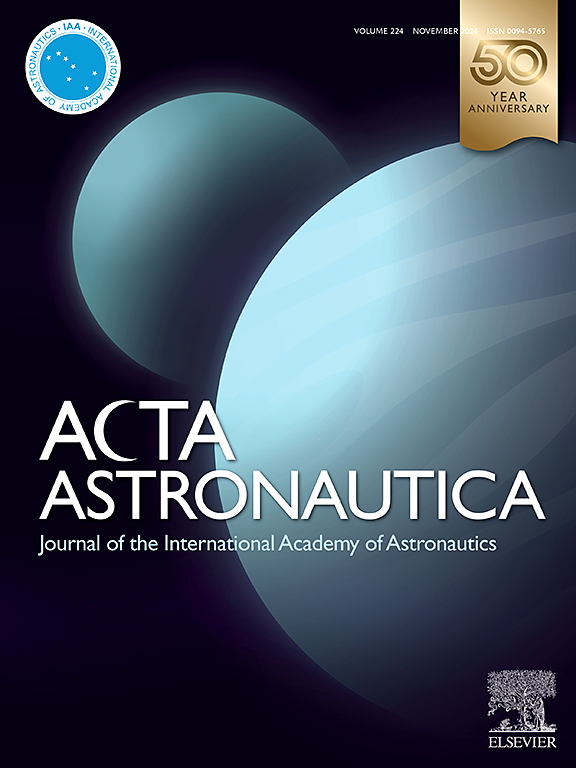Characterization of metal products from the molten salt electrolysis of lunar highland regolith simulants
IF 3.1
2区 物理与天体物理
Q1 ENGINEERING, AEROSPACE
引用次数: 0
Abstract
The FFC (Fray-Farthing-Chen) molten salt electrolysis process is one of the proposed technologies for oxygen and metal extraction from lunar regolith. Previous work demonstrated its capacity to extract up to 96 % of the oxygen present in mare type regolith simulant without requiring regolith melting. The FFC process also allows direct recovery of the reduced regolith, which has been shown to comprise particles and agglomerates that are mostly metallic. Here, we present the first quantitative analysis of those metallic products. Molten salt electrolysis of LHS-1 highland regolith simulant was carried out and the reduced simulant products were separated into size fractions. Residual oxygen content of the material was determined by inert gas fusion. Bulk composition, local phase compositions and particle morphology were assessed by Scanning Electron Microscopy (SEM) with Energy Dispersive X-Ray Spectroscopy (EDX). The compositional data was analysed using Principal Component Analysis (PCA) and agglomerative clustering algorithms, to assess the interactions between the metallic elements in presence and to identify the main phases formed. Results were compared with the electrolysis of the major mineral component of highland regolith, anorthosite. The electrolysis was shown to extract 97–99 % of the oxygen present in the simulant feedstock, with an increased current efficiency for the anorthosite samples. Analysis of the reduced simulants showed a complex and heterogeneous mix of alloys. The main phases in presence (e.g. Al2Si2Ca, AlSiCa, Al-Si-Fe compounds) are shown to often occur within multiphase particles. It was concluded that mechanical methods (e.g. sieving, elutriation) are not suited to isolate specific metallic alloys from the products. Contamination of the metallic products by the reactor materials (i.e. Cr, Mn, Ni, Mo) was also evidenced, highlighting the need for further improvement of reactor designs.
求助全文
约1分钟内获得全文
求助全文
来源期刊

Acta Astronautica
工程技术-工程:宇航
CiteScore
7.20
自引率
22.90%
发文量
599
审稿时长
53 days
期刊介绍:
Acta Astronautica is sponsored by the International Academy of Astronautics. Content is based on original contributions in all fields of basic, engineering, life and social space sciences and of space technology related to:
The peaceful scientific exploration of space,
Its exploitation for human welfare and progress,
Conception, design, development and operation of space-borne and Earth-based systems,
In addition to regular issues, the journal publishes selected proceedings of the annual International Astronautical Congress (IAC), transactions of the IAA and special issues on topics of current interest, such as microgravity, space station technology, geostationary orbits, and space economics. Other subject areas include satellite technology, space transportation and communications, space energy, power and propulsion, astrodynamics, extraterrestrial intelligence and Earth observations.
 求助内容:
求助内容: 应助结果提醒方式:
应助结果提醒方式:


